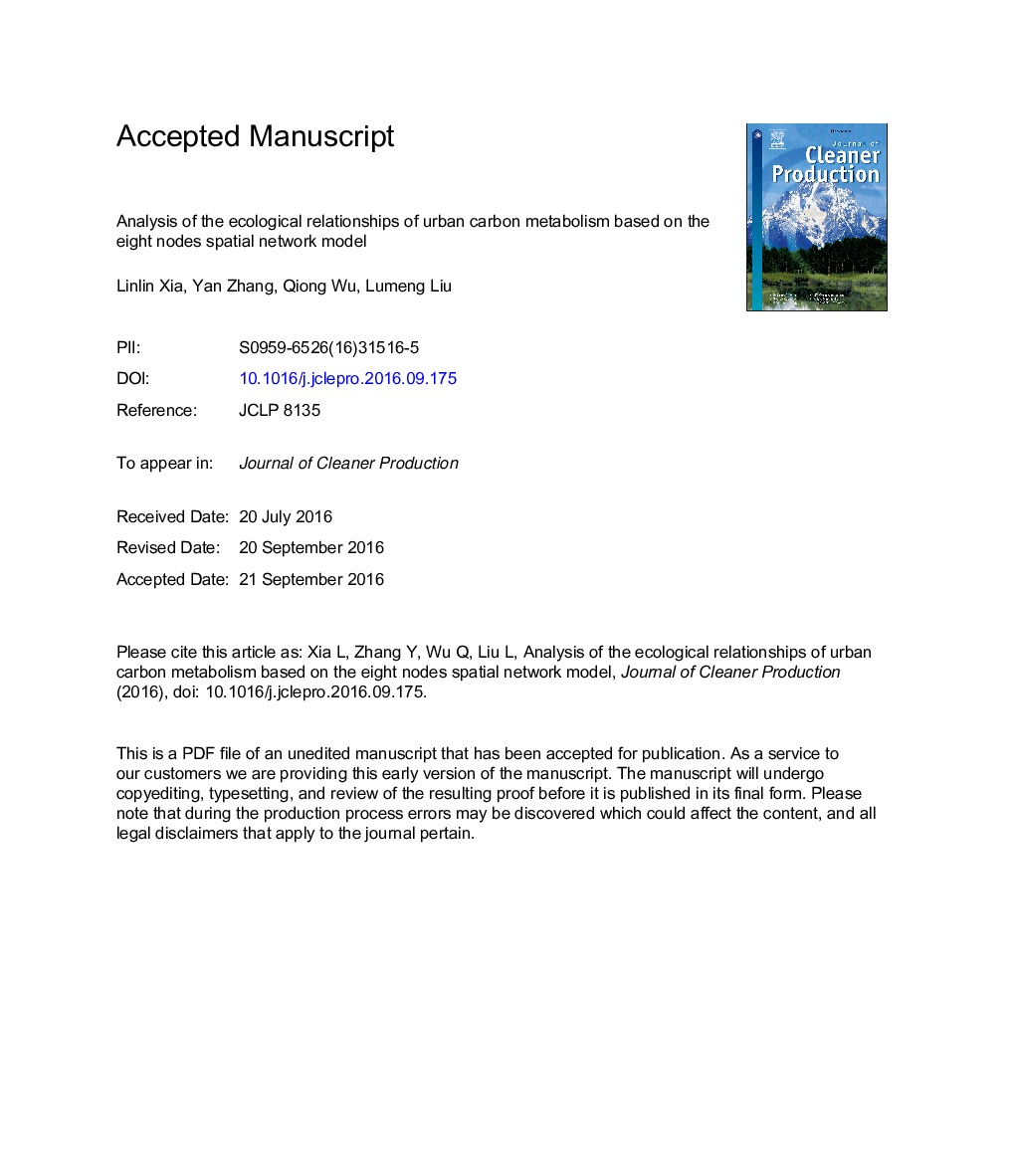| کد مقاله | کد نشریه | سال انتشار | مقاله انگلیسی | نسخه تمام متن |
|---|---|---|---|---|
| 5481423 | 1522112 | 2017 | 31 صفحه PDF | دانلود رایگان |
عنوان انگلیسی مقاله ISI
Analysis of the ecological relationships of urban carbon metabolism based on the eight nodes spatial network model
ترجمه فارسی عنوان
تجزیه و تحلیل روابط زیست محیطی متابولیسم کربن شهری بر اساس هشت مدل شبکه ای گره
دانلود مقاله + سفارش ترجمه
دانلود مقاله ISI انگلیسی
رایگان برای ایرانیان
کلمات کلیدی
متابولیسم کربن، رابطه زیست شناختی، جزء متابولیک، تغییرات پویا، پکن،
ترجمه چکیده
تجزیه و تحلیل روابط و تعاملات بین بدن متابولیسم کربن در یک منطقه شهری می تواند ایده های جدیدی را برای طراحی یک شهر کم کربن فراهم کند. در این مقاله، ما از تجزیه و تحلیل شبکه های زیست محیطی برای ایجاد یک مدل مکانیک صحیح متابولیسم کربن در پکن استفاده کردیم و تغییرات را در طول زمان بررسی کردیم. هدف ما شناسایی عناصر کلیدی و روابط با یک مدل شبکه هشت گره بود که زمین به عنوان گره محسوب می شد. داده های مربوط به پکن از سال های 1990، 1995، 2000، 2005، و 2010 با ضرایب تجربی برای ساختن شبکه ترکیب شده اند، که به ما امکان تجزیه و تحلیل کمی از ساختار و عملکرد شبکه و تعیین ارتباطات کلیدی زیست محیطی میان اجزای سیستم را از جنبه سیستم و هر جزء. تجزیه و تحلیل نشان داد که روابط استثمار و کنترل نوعی غالب بود که رشد اقتصادی را ارتقا داد. زمین برای حمل و نقل و صنعت، و کشت، قسمت اصلی این دو نوع رابطه بود. با این حال، روابط متقابل، پایداری سیستم را با سهم گره های طبیعی و گره های تکنولوژیکی در تراکم متابولیکی کم حفظ کرد. همزمان، روابط رقابتی اجتناب ناپذیر به نحوی افزایش بهره وری از استفاده منابع از اجزای طبیعی و زمین های کشت می شود. با استفاده از شبیه سازی کمی متابولیسم کربن، روابط منفی را که بر توسعه سالم یک منطقه شهری تأثیر می گذاریم شناسایی کردیم و مبنای نظری برای تنظیم مکان موثر فعالیت های مدیریت کربن را پیشنهاد می کنیم.
موضوعات مرتبط
مهندسی و علوم پایه
مهندسی انرژی
انرژی های تجدید پذیر، توسعه پایدار و محیط زیست
چکیده انگلیسی
Analysis of the relationships and interactions between the bodies of carbon metabolism in an urban area can provide some new ideas for the design of a low-carbon city. In this paper, we used ecological network analysis to develop a spatially explicit model of carbon metabolism in Beijing and examined changes over time. Our goal was to identify the key elements and relationships with an eight nodes network model, with land considered as the node. Data for Beijing from 1990, 1995, 2000, 2005, and 2010 were combined with empirical coefficients to construct the network, which allowed us to quantitatively analyze the structure and function of the network and determine the key ecological relationships between components of the system, from the aspect of the system and each component. The analysis revealed that exploitation and control relationships were the dominant types that promoted the growth of the economy. The land for transportation and industry, and cultivation were the primary bodies of these two types of relationship. However, mutualism relationships maintained the stability of the system, with contributions from natural nodes and technological nodes at a low metabolic density. Simultaneously, the inevitable competition relationships somehow increased the efficiency of resource use of natural components and the cultivated land. Using quantitative simulation of carbon metabolism, we identified the negative relationships affecting healthy development of an urban area, and we offer a theoretical basis for the effective spatial adjustment of carbon management activity.
ناشر
Database: Elsevier - ScienceDirect (ساینس دایرکت)
Journal: Journal of Cleaner Production - Volume 140, Part 3, 1 January 2017, Pages 1644-1651
Journal: Journal of Cleaner Production - Volume 140, Part 3, 1 January 2017, Pages 1644-1651
نویسندگان
Linlin Xia, Yan Zhang, Qiong Wu, Lumeng Liu,
